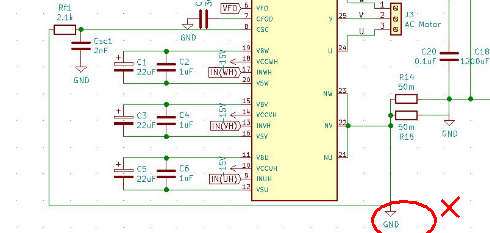I have been working in a VFD using an AC motor driver FSBB30CH60DF and making control of it using a dspic30f4011. As you can see in the attached circuit schematic, the mains supply is a single phase 120VAC and when the circuit is powered up, the relay bypasses the resistance after 1 second (the current waveform in green was measured with a clamp meter in the LINE node). I can power it up a few times and everything works well, until the last time I power it up: the driver burns out and does a short circuit on its terminals "P" and "N" which is connected to the VBUS. At the beginning I thought it was because I had not enough spacing between the traces but it was not this reason. What could I implement to the circuit to protect the AC motor driver (I was thinking of using a solid state relay or a thermistor in order to lower the inrush current but I am not really sure if this is going to work)?
Thank you in advance.
EDIT: This is the documentation about the driver:
https://www.onsemi.com/pdf/datasheet/fsbb30ch60df-d.pdf https://www.onsemi.jp/pub/collateral/an-9760jp.pdf




